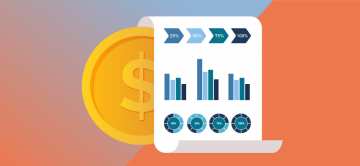Top 12 Data Science Use Cases in Government

Introduction
Big data analytics has been applied to different spheres of human life. One of the best features of data analytics is its adaptability and wide application specter. We have come through the whole series of articles concerning data science application in various spheres that are proving this statement. Let's consider data science use cases to government activity.
Under conditions of the rapid development of technologies and societies, governments need to solve complex tasks and manage various procedures simultaneously. Governments face the need for smart platforms capable of collecting, cleaning, filtering and analysis of vast amounts of data. Local governments, federal agencies, and departments use data-driven tools to optimize their work and improve the matters of security, public sector, law, defense, etc.
Let's get a closer look and make it clear how governments use data science and what benefits can it bring.
Fraud detection
Every year fraudulent transaction cause significant financial loss to the governments. Fraud has become a common thing. This fact may seem striking to you but let's look around. All operations that are more or less related to money present interest to potential fraudsters.
The key feature of the fraud on the governmental level is that the consequences to some extent will touch each citizen.
To mitigate the risks of fraud and following threats, governments apply smart data solutions and data analytics.
Tax evasion
Tax evasion presupposes the actions taken by the individuals or companies to misrepresent the real affairs to the tax authorities. Dishonesty in tax reporting like declaring less income helps to reduce tax liability. In other words, people or companies show less money with the purpose to pay less money to the state. Just imagine the amount of data that should be processed and analyzed to find an evader. This is really beyond human competence.
Luckily, modern analytical platforms and solution are capable of detecting tax evasion. The analytical algorithms used for this purpose rely not only on the financial data but also on social media information. The algorithms carefully go through the data and match the spenders' patterns to the incomes they declare. Thus, those who spend far more than they have are easily detected.
De-registered firms
The group of de-registered firms covers those enterprises that are not enrolled in the register anymore, gave up trading and are not subjects to legal liabilities and taxation. However, such firms can be easily brought back to life in case of need.
This fact provides a vast field for fraudulent activities. Quite often, the companies are no longer in the register, yet they continue their operation and finally, get income.
Analytical algorithms and AI-powered solutions are helping the governments in this respect. The algorithms track the activity even for those companies that seem inactive and alarm in case of suspicious actions taken. The algorithms detect the appearance of the company name or other information among the financial data. The disclosure of the de-registered firms helps the state to minimize and even prevent illegal avoidance from tax payment.
Defense
Defense matters are crucial for every state in the world. Every year governments all over the world spend billions of dollars for defense.
A significant part of this money is spent on the introduction of big data, machine learning algorithms, and AI-powered solutions to improve the performance of various military departments and institutions. Empowered by the smart data solutions these institutions can improve the decision-making process and reduce the time spent on the solution of a particular matter.
In the field of defense, the importance of big data is enormous. With the introduction of real-time analytics, the states got an opportunity to watch, track and monitor the borders, create multiple video streams from various strategically important objects, and watch over the air and navy spaces. Smart solutions are more attentive, accurate and reliable in their monitoring results. Predictive analytics appears to be a game-changing factor in the defense logistics and prevention of possible threats. The algorithms build possible scenarios calculating possible threats or damage.
Terrorist activity
In the last few decades, we were witnesses of numerous terrorist incidents all over the world. These matters need severe measures to be taken, as the security and well being of people are under threat.
Terrorism has become a kind of business for some groups of people. Terrorist organizations even recruit young people through social media platforms.
Big data analytics, machine learning algorithms, and text mining are widely applied to detect such activity. Vast amounts of data on potential terrorist behavior are collected and carefully processed. This data includes unusual conversations, texts, interaction and contacts, purchases or movements in the potentially dangerous locations, etc. Security agencies are working on real-time detection of data patterns and linking these patterns into systems. These smart data solutions screen all the available data and form reports on possibly dangerous individuals or groups taking into account the data concerning previous cases of extremism, crime or terrorism.

Street crime awareness
The use of modern inventions and databases by the state authorities has changed the whole picture of the criminal world. Fingerprints, DNA samples, ballistic analysis opened new opportunities for those who investigate crimes and strive to prevent them from happening.
The police departments all over the world utilize big data to predict crime mapping. These systems use previous data on crime type, location, date and time to create the hotspots. The maps with the hotspots prove to be much more efficient than pure guessing.
Also, smart city systems allow monitoring of multiple locations under conditions of real-time streaming. Highly sensitive cameras and movements detectors spot suspicious actions and send alarms to the police.
Cyberattacks
In the world of digital technologies, cybersecurity has become an issue of the governmental level. We collect and analyze the vast amount of data to reveal its valuable insights. But the results of our careful processing and analysis may become interesting for someone who wants to use it for a particular aim. Moreover, these people are planning to take the data illegally via theft or hackers attack.
Just imagine the amount and importance of data possessed by the governmental institutions. In case this data becomes available to the public or at least to particular individuals, or if the data disappears the consequences may be distracting. Therefore, big data analytics and particular machine learning tools are used to monitor and examine carefully all the operations involving valuable data to reveal trends and patterns in these actions. The systems monitor the users and devices on the network and flag suspicious individuals or actions. It allows the state to take more operative, reliable and secure measures to prevent cyber attacks.
Smarter surveillance
Surveillance cameras are used more and more extensively. These cameras have already proved their efficiency on smaller objects. Now they are making their ways to the darkest and smallest streets and corners of cities and villages.
Surveillance cameras are not just recording the videos. Today their capabilities get wider. For instance, now they can recognize violence or criminal activity and distinguish fight or physical abuse from other actions and movements after that the smart recognition system sends the message to the police.
Also, similar algorithms are used to recognize traumatic falling or other injuries and can inform about the emergency. This proves to be very helpful for elderly people and people suffering from severe chronicle diseases.
National security
Since the interaction of people and data becomes more intensive every day, the idea of using big data for the benefit of society seems more and more attractive. The data becomes a more reliable source presenting great value for the state. Thus, and becoming a matter of national security.
Undoubtedly, big data analytics supports national security and brings opportunities for different areas. Among them are the anomaly detection, association mining for disclosure of the patterns and interconnection between the datasets, classification, and clustering of the data. Also, it can be used for link analysis and disclosure of hidden message from the texts or documents. Thus, it makes visible for people the information, relations, and patterns that people can overlook. In combination with human judgments, big data analytics helps in decision making.

Law enforcement
Big data analytics can make a difference in law enforcement. Law enforcement agencies can achieve significant results in work having at hand the huge databases filled with data concerning number plates, identities of the criminal, crime statistics and access to social media platforms.
With the help of modern analytics tools, law enforcement agencies can turn the available data into actionable intelligence. Thus, the phenomenon of predictive policing appears. It means that big data analytics allows preventing crimes from happening. Nowadays, predictive policing is on its rise, despite all the disputes and arguments against it.
Health and human services
State agencies working with or controlling health and human services use big data analytics as efficiently as other governmental authorities do. Not to analyze the available data in this area would be a significant loss.
Provision of high-quality services to the citizens is the priority task for the government. Therefore, the activities of the health and human services (HHS) agencies are regulated by the state. HHS agencies work hard to provide transparency in their operations and satisfy all the needs of their customers. The application of the real-time analytics empowers the employees to collect, process, analyze and visualize data and get the real view on the services they provide and the satisfaction level of their customers. It is much easier to draw conclusions and identify the matters for further improvement relying on the results of accurate analysis.
Emergency response
The capability to incorporate data from multiple sources gives a significant advantage to local governments and authorities under conditions of emergencies. Real-time analytics helps to make immediate decisions under stressful situations. Control over multiple communication channels and use of smart tools that recognize possible threats and send alarms give a chance for local authorities to warn the citizens and advise them about further actions.
Conclusion
Taking into consideration all the instances mentioned in our Top Data Science Uses Cases in Government it is quite evident that the advantages are numerous. They are starting with the reduction of time to resolve a single issue and ending with the capability to prevent disastrous cases. All these fall under the competence of data science and its smart use. The range of possibilities is vast.
Big data improves the governmental sector. The ordinary citizens feel practical results of these changes in their daily lives and services provided by the state. Hopefully, even more, positive changes are yet to come and bring positive changes to the states all over the world.




Comments
Add a new comment: